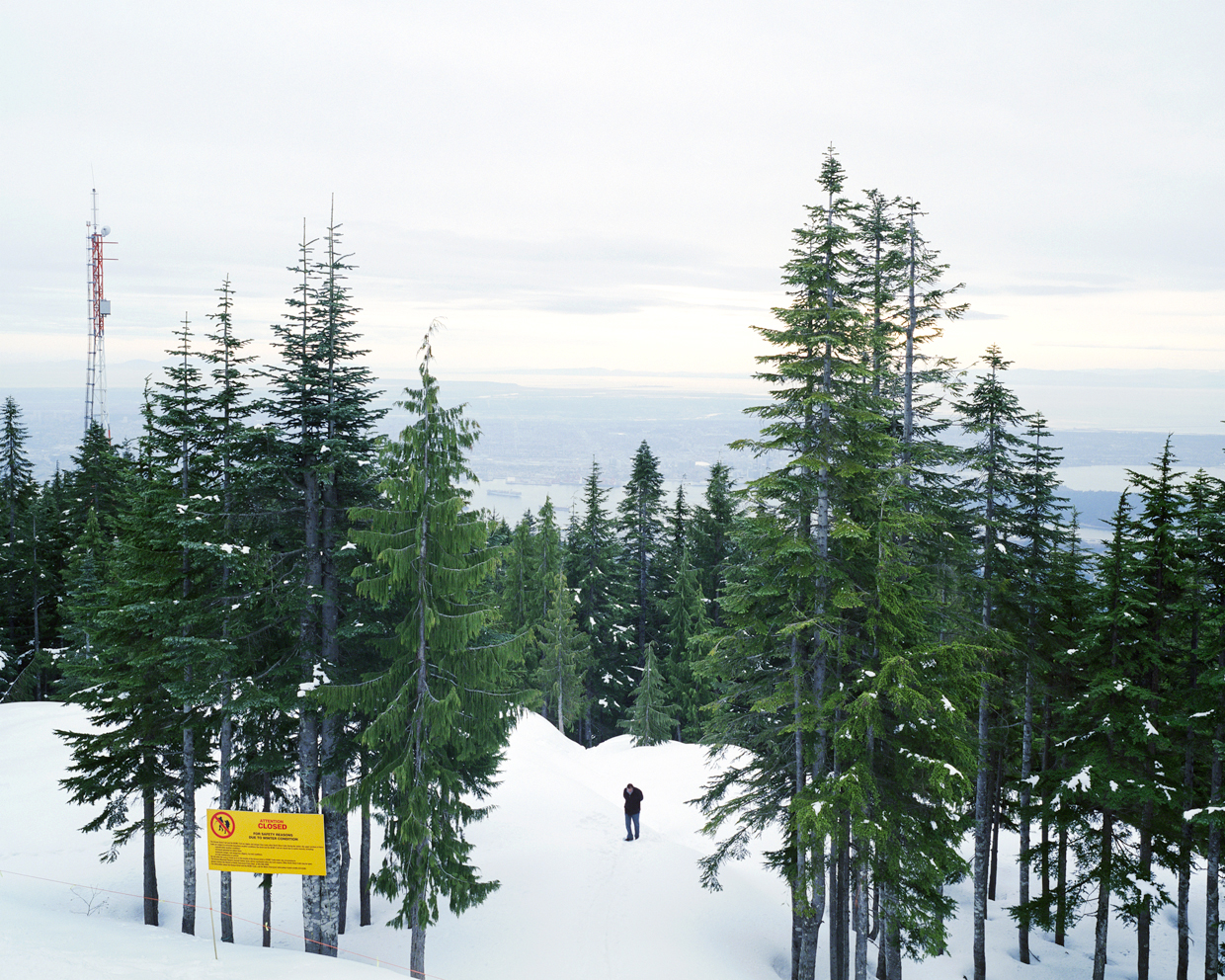






















Your Custom Text Here
2009-2013
How do people identify with the landscape? In the past, I have made pictures of the natural world that has been altered by man in some way or another – from subtle incursions to a near annihilation of it. While people were present in some of my previous work, I was concerned more with the evidence of their intervention. They were there in spirit but not in actuality. In this new body of work where people are the focus of my photographs, I investigate how they relate to, interact with, and experience the landscape.
Yet I have intentionally photographed people from behind, in shadow or at a scale where it is difficult to obtain a clear read of their faces. These “anti-portraits” are not about the individual identities of the people being portrayed but about how people “fit into” (or not) the landscapes that I have captured. For this series, I was inspired by the paintings of the 19th century German romantic landscape painter Casper David Friederich, who painted people from behind to allow the viewer to project him/herself into the scene before him/her and experience the landscape vicariously - a visual technique called “ruckenfigür.” By obscuring the identities of the people in my photographs, I am hoping to give the viewer a similar experience - to imagine themselves in these overwhelming, calming, peculiar, mundane, social or lonely depictions of the landscape. Each of us experiences the landscape in ways unique to us, and these experiences shape who we are and how we see the world around us.
Note: None of the photographs in this series were staged. I am not acquainted with any of the people represented, and I did not speak to or interact with any of them during the shooting process.
2009-2013
How do people identify with the landscape? In the past, I have made pictures of the natural world that has been altered by man in some way or another – from subtle incursions to a near annihilation of it. While people were present in some of my previous work, I was concerned more with the evidence of their intervention. They were there in spirit but not in actuality. In this new body of work where people are the focus of my photographs, I investigate how they relate to, interact with, and experience the landscape.
Yet I have intentionally photographed people from behind, in shadow or at a scale where it is difficult to obtain a clear read of their faces. These “anti-portraits” are not about the individual identities of the people being portrayed but about how people “fit into” (or not) the landscapes that I have captured. For this series, I was inspired by the paintings of the 19th century German romantic landscape painter Casper David Friederich, who painted people from behind to allow the viewer to project him/herself into the scene before him/her and experience the landscape vicariously - a visual technique called “ruckenfigür.” By obscuring the identities of the people in my photographs, I am hoping to give the viewer a similar experience - to imagine themselves in these overwhelming, calming, peculiar, mundane, social or lonely depictions of the landscape. Each of us experiences the landscape in ways unique to us, and these experiences shape who we are and how we see the world around us.
Note: None of the photographs in this series were staged. I am not acquainted with any of the people represented, and I did not speak to or interact with any of them during the shooting process.
In the Snow Forest
On the Yellow Mountain
In the Ocean
At the Coast
On a Platform in the Desert
On Lava Beds
At the Edge of the Lake
At the Salt Flats
At the Picnic Table by the Lake
On an Overlook
On a Rock
In Front of a Tree
On a Beach
On a Hill (Overlooking the Bay)
At the Airstrip
By a Bush in the Desert
In the Fog
On a Cliff (Overlooking the Surf)
On Top of the Cliff
By the Bay
In and By the River
At the Gorge